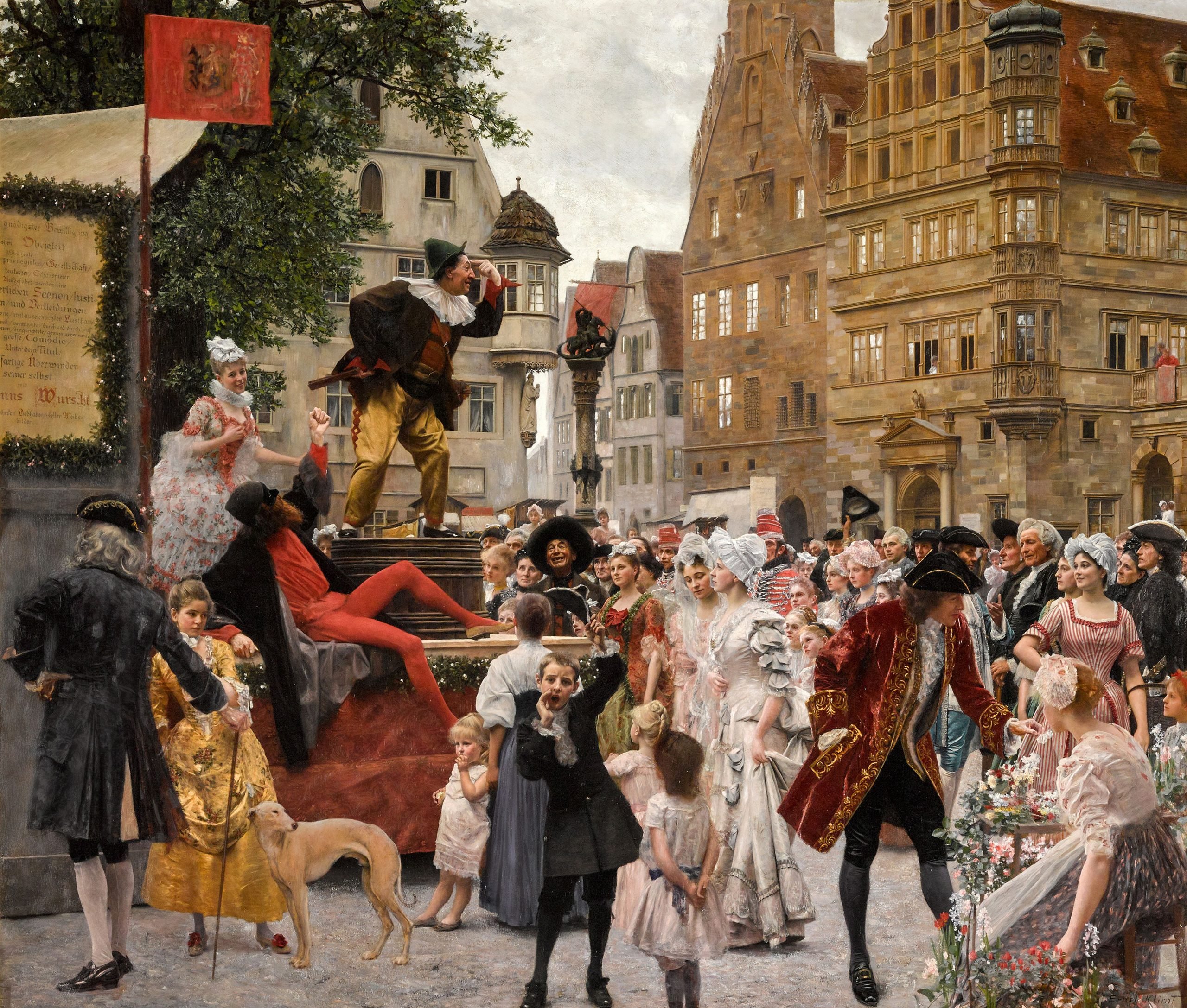
A painting that may have helped heal Gustav Klimt’s heart after a major loss is coming to auction next month. Sotheby’s is offering Hanswurst Delivering an Impromptu Performance in Rothenburg (1892-94) at its Old Master and 19th-century paintings auction in London on December 4. It’s expected to hammer at £300,000 to £500,000 (about $380,000 to $636,000). Although Klimt’s younger, lesser-known brother Ernst began the painting, Klimt took it upon himself to finish it following Ernst’s unexpected death in 1892, at age 29, from inflammation of the pericardium.
Their careers were intertwined. In 1877, aged just 13, Ernst joined his brother at the University of Applied Arts in Vienna. In 1881, they founded Künstler-Compagnie alongside Viennese artist Franz Matsch and started taking commissions.
Hanswurst Delivering an Impromptu Performance comes from one such gig. In 1886, they painted 10 works inside Vienna’s new Burgtheater at the behest of its artistic director, playwright Adolf von Wilbrandt. Their cinematic decorations remain on view today.
Ernst contributed two works to the ensemble memorializing theater since antiquity—including Hanswurst, which shows its titular comedic character commanding an audience in the street. Gustav and Matsch painted four panels each. Emperor Franz Joseph I awarded Gustav the Golden Order of Merit for his work. Meanwhile, Ernst’s preparatory oil sketch for Hanswurst sold at auction in 1915. It is now lost.
The Burgtheater. Image: Tony Marshall, PA Images via Getty Images.
No one knows why Ernst started a smaller oil painting of Hanswurst four years after finishing the original. Perhaps a patron saw it at the Burgtheater and wanted their own. With Gustav Klimt before the easel, however, this Hanswurst was bound to be different. “As often as he tried to get started, he simply couldn’t and despaired,” his sister Hermine once remarked. “When he got home, he would say ‘I can’t finish it!'”
But, of course, he did. Perhaps to cope with the task, Gustav changed some faces in the crowd to resemble his and Ernst’s loved ones, including Ernst’s wife, Helene Klimt, and her sister, Emilie Flöge, who soon became Gustav’s life partner.
“Both Ernst and Gustav were young artists, still cutting their teeth—so who knows what Ernst would have gone on to do,” Claude Piening, Sotheby’s head of 19th-century art, said over email. “Would he have joined the Vienna Secession like his brother? Maybe.”
December marks only the third time Hanswurst has hit the market. A private collector bought it from a Viennese exhibition in 1895, and Sotheby’s sold it again in 1984, when the current seller bought it for a hammer price of £140,000. “Works from this period are extremely rare, in my time at Sotheby’s,” said Piening, explaining that “for the last three decades, we have never sold a Gustav Klimt from this period, let alone a collaboration. It is important to note, though, that this is more an Ernst Klimt, and his brother would have been trying to stay true to the style in which it was started.”
Gustav even signed Ernst’s name. Maybe that’s why, despite its backstory, Hanswurst trails the works by Sandro Boticelli, Artemisia Gentileschi, and Rosso Fiorentino that are headlining next month’s sale, each slated to fetch between £2 to £3 million (about $2.5 million to $3.8 million).
Examples from this same group have proven attractive at auction, however. In 2020, Gustav’s study for another work at the Burgtheater dramatically outdid its estimate at auction. And in any event, this collaboration is likely to best the current record for Ernst Klimt, which is $240,689, set when his 1892 painting Drei Musen went to auction at Vienna’s im Kinsky in 2009.